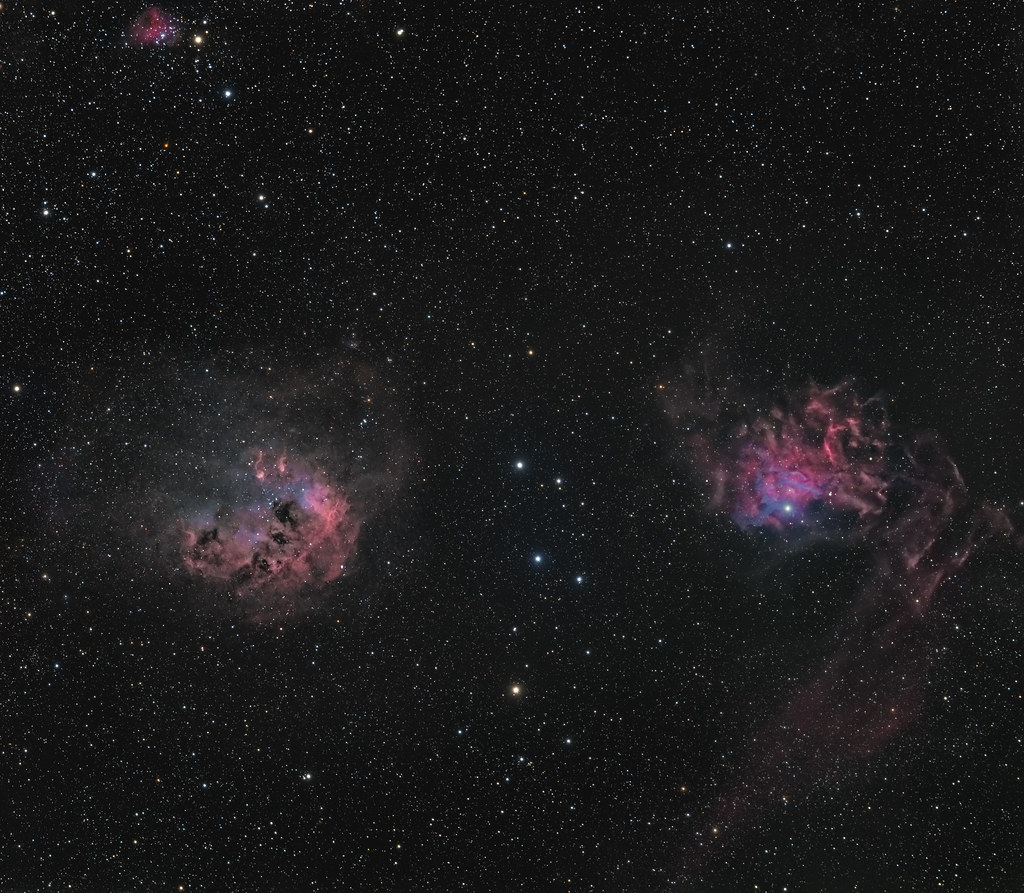
Full size is here:
The image shows three nebulas in the constellation Auriga that are between 1500 ly and 19000 ly away from us. The nebula at the top is called the Spider Nebula (IC417, 9500 ly). The one at the right is the Flaming Star Nebula (IC 405, 1500 ly). The nebula at the left (IC 410, 19000 ly) contains the famous two "Tadpoles" that are dense aggregations of cosmic dust.
The image is an integration of 300 images shot in 2016 with a small 480 mm apochromatic refractor and my stock Pentax K3 ii in "normal light" (as the underlying mosaic) and about 100 images of the nebulas themselves shot some days ago with the same camera but a bigger 910 mm refractor. The special thing is that a filter was used in the actual images that only lets through the wavelength of red emissions that are caused by the radiations of high active stars in the cosmic gas clouds (H-Alpha filter). The H-Alpha data reveal more structure in the most cosmic nebulas. The filtered image data were then blended with the mosaic image in form of a so called Ha-RGB image.


 Similar Threads
Similar Threads 












 Post #1 by Pete_XL
Post #1 by Pete_XL








